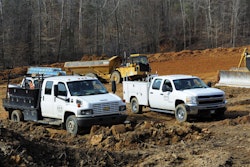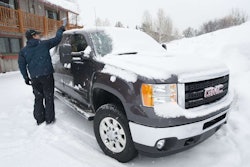Playing the Number$ Game
 By Bruce W. Smith, Editor
By Bruce W. Smith, Editor
Some 40 years ago vehicle manufacturers were fighting for market share and vehicle sales using horsepower as their sales weapon. There were a lot of games played and the power numbers varied from vehicle to vehicle with the same engine.
The manufacturers had always used SAE gross horsepower – the power an engine generated at the flywheel sans any belt-driven accessories, mufflers or anything else that would rob power.
It was more or less an open secret at the time manufacturers like GM underrated some engines so vehicle owners who wanted to own hot cars could keep from getting hammered by insurance company’s levying huge surcharges.
The performance cars’ engines were also underrated to have a competitive edge in drag racing where classes were determined by the vehicle manufacturer’s advertised horsepower.
But those ratings changed in the early ‘70s thanks to pressure from both environmental and safety groups. Vehicle manufacturers used new SAE testing standards that still used flywheel numbers – but with the test-stand engine fitted with the real-world equipment from smog pumps to mufflers.
Those SAE “net “hp numbers were modified again in 2005 so a third-party observer had to be present to verify the tests were being done correctly.
It’s just the opposite in the world of tow ratings.
As the horsepower wars were losing the marketing edge, vehicle manufacturers who depend on pickup sales found another numbers game to play to help boost sales and bragging rights: maximum pickup towing capacities.
Until a couple of years ago, vehicle manufacturers used their own testing protocols to set towing and payload capacities.
But tow ratings, unlike horsepower in the old days, are more than likely overrated, not underrated. It’s all about marketing and class leading numbers. The higher, the better.
Tow ratings are so fluid that many of my fellow automotive journalists and I would place bets on how soon it would take one of the biggest manufacturers in the Big Three to “revise” their tow ratings once their competitor’s numbers came out on a new model.
Invariably that manufacturer’s newly revised tow ratings, changed apparently with nothing more than the use of an eraser, were always a couple hundred pounds better than the other pickup maker’s.These new figures were then touted in every form of advertising as being “best in class.” Best in class translates into more sales.
But such numbers are nebulous if they are not based on a universal test standard.
That’s why a group of forward-thinking, conscientious automotive engineers and vehicle testing experts formed a subcommittee within the Society of Automotive Engineers (SAE) about 5 years ago. They wanted to bring continuity and conformity to vehicle towing and payload ratings – just like was done on engine horsepower.
It took them a couple years to hammer out a really solid SAE tow rating protocol called J2807.
This new test standard outlined a very specific set of testing procedures and real-world testing locations to which every new vehicle was subjected and the numbers derived.
Consumer safety would no longer take a back seat so marketing could push vehicle capabilities to the very edge just for the sake of boosting sales.
J2807 was supposed to have been voluntarily adopted by all the vehicle manufacturers for the 2013 models. Nissan, Toyota and Ram took the lead early, using J2807 protocols for the last couple of model year pickups. GM followed suit for the 2013s.
Not so with Ford. Those at the Blue Oval apparently felt it wasn’t in their best interest to adopt the new test standards until their next generation pickups roll out in a couple years.
Hence, Ford’s 2013 numbers are still derived from in-house testing procedures like they have always done.
So, GM reversed field and revised their 2013 towing/payload numbers a few months ago to reflect pre-J2807 standards so they, too, could be “competitive” with their biggest rival in the numbers game.
I’m disappointed in both GM and Ford: GM for backing down on setting a new standard, and Ford for not stepping up to play on a level field.
SAE J2807 is a friend, not a foe.
I take comfort in knowing the vehicle I am driving has been tested and its capacities rated using the latest technology and testing procedures where a vehicle dynamics engineer is calling the shots – not a bean counter trying to make another sale. But that’s just me.
So if you are shopping for a new pickup and tow rtings have real value in the purchase decision, just remember those that conform to J2807 testing protocols are real-world, apples-to-apples numbers.
As for the rest, well you’ll just have to take the manufacturer’s word for it.








